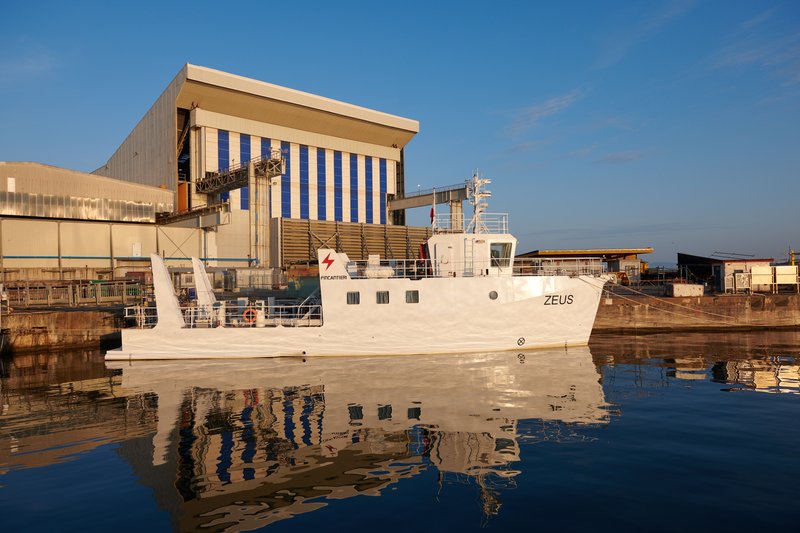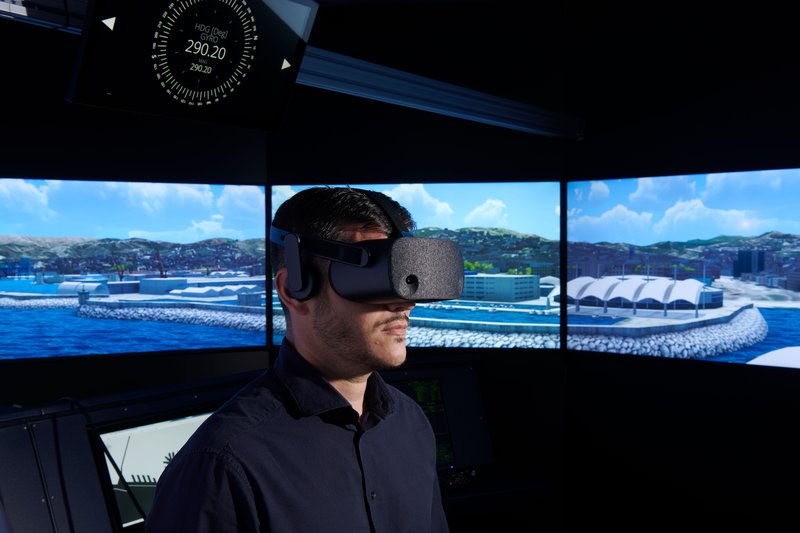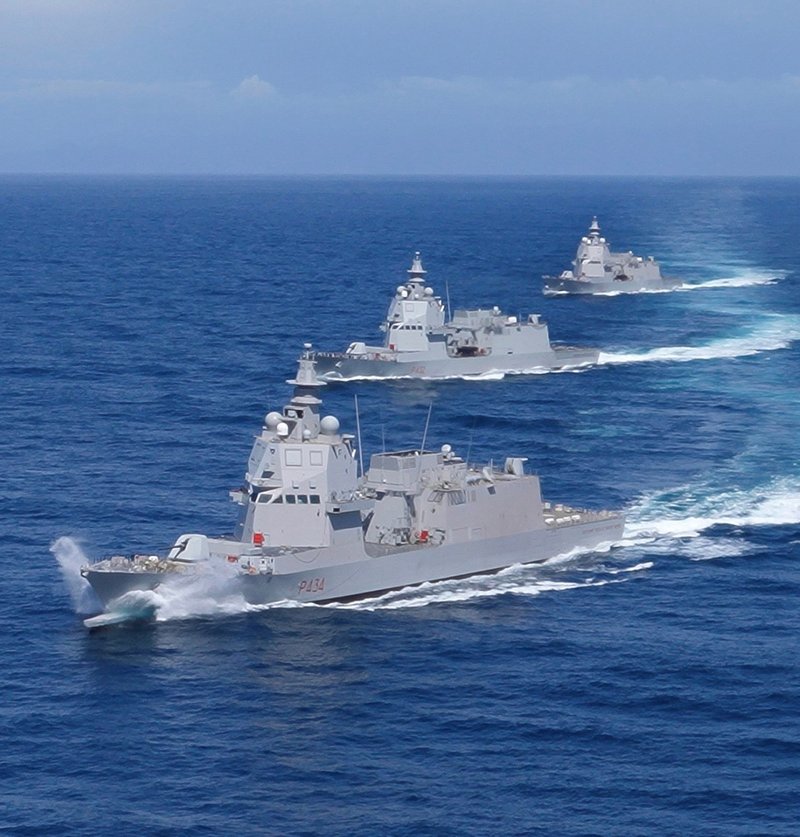Pioneering the Future of Naval Defence: Fincantieri's Cutting-Edge Innovations
This article is brought to you by Fincantieri
As Europe’s largest shipbuilder, Fincantieri, with its rich history of over 230 years in naval vessel design and construction, is positioned at the forefront of innovation in the maritime industry. Fincantieri’s commitment to continuous improvement and adaption has consolidated its role as a key player in developing state-of-the-art naval technology that enhances operational effectiveness and ensures mission readiness in diverse and challenging environments.
Fincantieri’s commitment to cutting-edge naval engineering is exemplified through its pioneering work in alternative propulsion systems. The company is leading the charge in integrating hydrogen fuel cells into naval vessels, having already demonstrated success in submarines for the Italian Navy. This initiative is now being expanded to surface ships, with the ZEUS project standing as a groundbreaking example of hybrid propulsion technologies. By collaborating with Italian universities and research institutions, Fincantieri is not only improving naval sustainability but also ensuring vessels retain their military readiness.

Fincantieri is also exploring the potential of biofuels in naval defence. Through a partnership with ENI, the company is adapting biodiesel derived from non-food sources to power its military ships. This innovation enhances energy security for military operations, where logistics are critical to mission success, while simultaneously reducing environmental impact—a growing concern in maritime defence operations.
Optimising vessel performance is another area where Fincantieri excels. The company employs advanced hull treatments that reduce biofouling, which in turn decreases fuel consumption and maintenance requirements. The company’s electric propulsion systems enable vessels to operate quietly and efficiently during low-speed operations, such as surveillance and reconnaissance missions. Meanwhile, Fincantieri’s Featherable Controllable Pitch Propellers allow ships to adjust propulsion dynamically, maintaining stealth and operational efficiency in high-stakes situations.
Sustainability and military effectiveness are intertwined in Fincantieri’s approach. Cold ironing technology, which enables ships to connect to shore power while in port, helps reduce emissions and noise, a significant benefit in environmentally sensitive areas. The adoption of Selective Catalytic Reduction (SCR) systems to lower nitrogen oxide emissions further demonstrates Fincantieri’s commitment to creating vessels that balance military performance with environmental responsibility.
Digital innovation is transforming Fincantieri’s naval vessels. One of the company’s most advanced tools is the Digital Twin, a virtual model of a ship that monitors real-time data from onboard sensors. The concept of a Digital Twin lies at the heart of fully digitalising the lifecycle of a ship starting from the design phase, exemplified through Fincantieri’s integration of tools within the Digital Twin framework of the FCx30. Essentially, a Digital Twin transforms a digital model into a dynamic entity by incorporating real-time data gathered across daily operations. Crucially, seamless integration between digital tools and the ship’s onboard data network is instrumental in constructing an effective and economical Digital Twin.
This technology allows for predictive maintenance, performance optimisation, and structural health monitoring, ensuring that vessels are always in optimal condition for deployment. By providing a detailed overview of ship systems, from propulsion to operational availability, Digital Twins enhance mission readiness and reduce operational costs.
In addition, the Digital Twin serves as a critical tool for training naval personnel. Through realistic simulations, crews can train for various scenarios in a controlled environment, improving their preparedness for actual operations. This is especially useful in the case of naval vessels to be delivered in foreign countries, which require continual training as systems evolve. Fincantieri’s Extended Reality (XR) systems further enhance crew capabilities by providing remote technical assistance, allowing operators to troubleshoot and resolve issues using immersive virtual environments.

Another milestone in Fincantieri’s military innovation is the introduction of the Advanced Cockpit System, developed in partnership with the Italian Navy. Installed on the PPA Multipurpose Combat Ship, this system revolutionises naval operations by streamlining navigation, ship management, and tactical decision-making. Inspired by avionics technology, the cockpit allows two officers to oversee complex operations with an integrated interface, improving response times and reducing crew fatigue.

Cybersecurity is another critical pillar of Fincantieri’s naval strategy. With military vessels increasingly dependent on digital systems, the company has adopted a Secure by Design approach, embedding cybersecurity into every phase of a ship's development. This proactive stance ensures that naval vessels remain protected against emerging digital threats, safeguarding mission-critical systems from cyberattacks.
Fincantieri’s relentless pursuit of innovation is redefining the future of naval defence. By integrating advanced propulsion systems, digital tools, and sustainable technologies, the shipbuilder is enhancing the operational capabilities of modern fleets. As maritime security challenges grow, Fincantieri continues to lead the charge in delivering vessels that are both militarily effective and environmentally responsible.
More from Industry Spotlights
-
![“Adversaries have adapted”: how counter-UAS and space control will decide future conflicts]()
“Adversaries have adapted”: how counter-UAS and space control will decide future conflicts
In conversation... EOS's Andreas Schwer talks to Shephard's Ben Watts about how the Australian company is shifting its strategic focus to two technologies it sees as essential for success on the modern battlefield - C-UAS and space control.
-
![Tiltrotor: The Long-Range Maneuver Solution]()
Tiltrotor: The Long-Range Maneuver Solution
If competition turns to conflict, the United States, along with its allies and partners, must be prepared to confront peer and near-peer competitors capable of achieving parity in military capability.
-
![Introducing the MITR-M1 Half Mask: Tactical respiratory protection for every scenario]()
Introducing the MITR-M1 Half Mask: Tactical respiratory protection for every scenario
Counter terrorism, specialist firearms officers, special forces, explosive breaching, drug interdiction, riot control, indoor/outdoor shooting, environmental disaster response, first response, prisons and corrections: tactical operators across law enforcement, first responders, and the military face a vast array of low-mid level respiratory threats in their day-to-day operations.
-
![Need to develop AI-powered red pictures for battlefield situational awareness?]()
Need to develop AI-powered red pictures for battlefield situational awareness?
Leverage Systematic's SitaWare suite to fuse intelligence and share awareness of your opponent’s deployments and capabilities.
-
![Sustain capabilities and secure advantage with advanced Digital Engineering]()
Sustain capabilities and secure advantage with advanced Digital Engineering
CDS Defence & Security optimises defence systems with Digital Engineering and MBPS for peak performance. Learn more today!
-
![Solving production & supply chain challenges with additive manufacturing]()
Solving production & supply chain challenges with additive manufacturing
Boosting supply chain resilience with additive manufacturing: exploring solutions to production and logistics challenges.

























